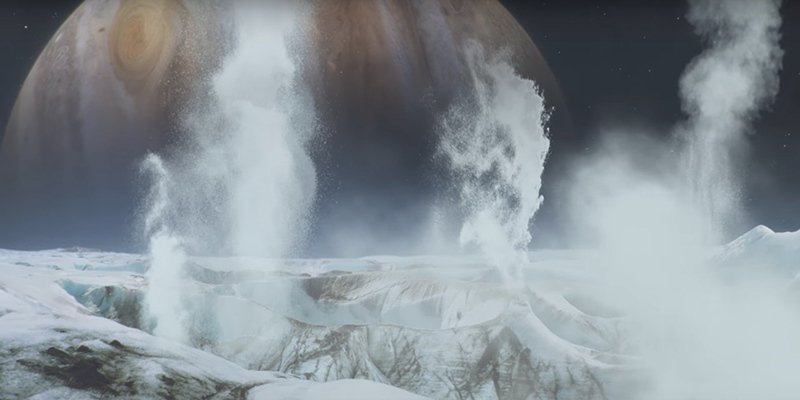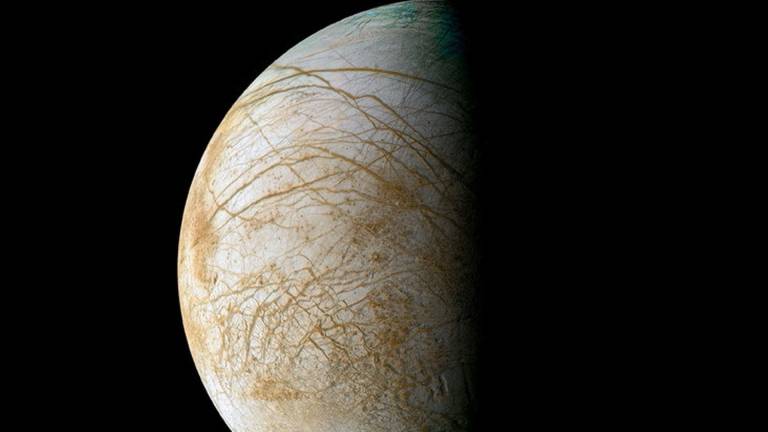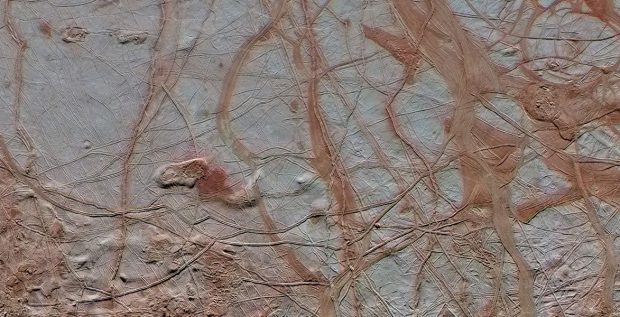© 2000-2023 - Enkey Magazine - All rights reserved
ENKEY SNC - VAT ID IT03202450924 / REA Code CA253701 - Phone. 078162719
We talked and we heard talking a lot about Europe, this incredible and amazing moon of Jupiter in the last years catched the attention of scientists and passionated which were astonished by its amazing predisposition for the life. Yes, because in all of our Solar System the planetary body most suitable for the life would seems right Europe, one of the moons of the gaseous giant Jupiter.
This natural satellite is infact filled with water, essential element for the life that for long, too much time, we believed it was only ours.
As a proof of this massive liquid ocean which is hidden, placid, undisturbed and maybe thriving with life, there are the many and massive geysers. Which can only come from an underwater ocean.

So the NASA and with it all the scientists and the astronomous of the world are going to find out ever more about it. By getting even the help of a probe which they will send on the satellite.
Furthermore, the passage of the probe Galileo, already revealed, in the 1999, the presence, in the Europe’s atmosphere, of sulphuric acid, which could be produced by bacterias colonies that populate its ocean.
But now, arised a further amazing discovery, about this astonishing planetary body: the presence of sodium chloride, or, only, salt.
The discovery of the salt on Europe
To understand how was possible to find out the presence of the salt on Europe, without directly going on its surface, we have to come back to a study, made in the 2017.

Back then the sodium chloride, the main component of the common cooking salt, was exposed to the same quantities of radiations of Europe. Doing that we could see how this act in conditions different than the terrestrial ones. It was discovered that in this particular conditions the sodium chloride took yellow shadows, by making it perfectly identifiable in the visible spectre.
Without this experiment we would never be able to know how the salt acts in different conditions than the terrestrial ones. But now that the scientists know it they were able to find it even from incredible distances.
It was discovered so, that in reality it was almost there, on Europe. For all of this time we observed specific regions of the satellite deyd on yellow, like the Tara Regio, without know that what we were looking at were in reality an extraterrestrial saline.
The research
The research was made by a group of researchers of the Caltech (California Institute of Technology), coordinated by Samantha Trumbo. It revealed what they found out from the last observations, by comparing them with the experiment of the 2017.
It was thought for a long time that on Europe there was a high concentration of another kind of salt, the magnesium sulphate. It was believed it for the presence of clouds of sulphuric acid, releaved by the probe Galileo. But in reality the doubt that there were the presence of sodium chloride, our common cooking salt, was believed already from a while, but no one known how to demonstrate it.
Some observations made by the optical telescope W. M. Keck Observatory led us thought that next to the sulphates there were even the chlorides. But they were just theories, because the chlorides aren’t visible by the infrared telescopes, much less the ones dissolved in the water.
Finally the experiment of the 2017 suggested where and how look for them. And it was possible, finally, to demonstrate the presence of the sodium chloride on the surface of Europe and, probably, inside its big underground ocean.

To observe it it was the telescope Hubble, that found it next to that long loopholes that run along all the planet’s surface. Areas which were probably created by the leakage of warmer water from the ground’s depths on the external ice. The fact that it is present right in this areas, let us hope that the characteristics of the Europe’s ocean are really similar to the terrestrial ones.
This would mean that an hypothetical life form won’t be much different than the ones that we could find on our planet.
Some studies believe that the conditions of the Europe’s ocean should be really similar to the ones of some terrestrial thermal areas, like the ones of the Lake Vostok, in Antarctica. So the life forms that we could find in this environment should be really similar to the terrestrial microbial and bacterial ones.
Who knows if Europe won’t end up by giving us this last amazing discovery.
This post is also available in:
 Italiano
Italiano

